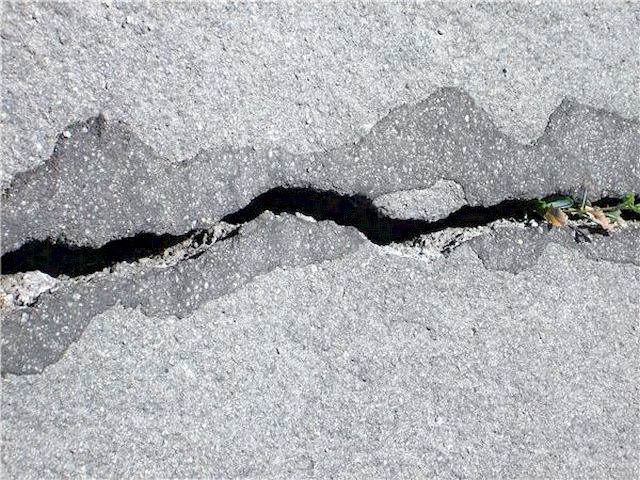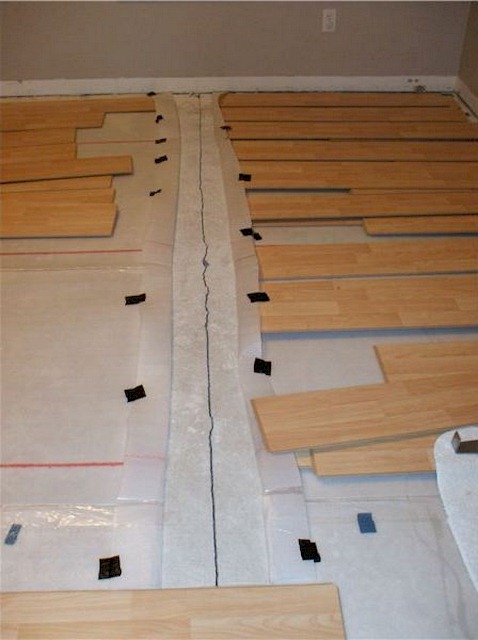The best method to repair unsightly cracks on concrete is a simple do-it-yourself job that won’t take much time or effort.
It is important to tackle the causes of the cracks and to do so promptly in order to avoid having to tackle a major job down the road.
How to Repair Crack in Poured Concrete Foundation

What Causes Cracks in Concrete?
Cracked concrete in driveways is visually unattractive and an invitation for weeds to grow. The best method to repair a crack in poured concrete foundation is dependent on the size of the cracks, the type of concrete used, and available materials. Tackling cracks on concrete before they get larger is highly recommended to avoid further expansion and greater damage.
Concrete will undergo a certain amount of contraction and expansion, which will fluctuate based on weather conditions. Most large driveways are poured in sections to allow for expected cracking.
Over time, this contraction and expansion may lead to serious structural issues, and foundation repair due to water damage can become a necessity.
Proper maintenance and understanding the role of water in foundation integrity are vital to preventing costly repairs in the future.
Additional reasons for cracks in concrete could include an incorrect mixture of water and concrete, and a lack of appropriate supports, such as rebar or wire.
Other reasons may include improper curing periods, pools of standing water, or pouring in very cold and wet conditions.
A well-poured concrete driveway will include a measured incline to allow water to drain away from its surface towards the street.
How to Fix Outdoor Concrete Cracks
It is important to start with a clean surface in order to ensure the proper adhesion of repair material and ensure a smooth finished surface. The best method to fix concrete cracks outdoors will depend on the severity of the crack.
Anything larger than 1/4″ wide is considered a large crack. Start by cleaning the surface area with a wire brush and removing obstructions such as; dirt, wood chips, weeds, and any other loose or embedded material that is not concrete.

Clean the area using water pressure from the water hose or air compressor.
Purchase a ready-to-use concrete epoxy filler such as Sacrete or Sika. Sacrete comes in a 2-quart liquid bottle that is easy to squeeze into the crack. Leveling the surface is as simple as using the putty knife and removing any excess. Sika requires a caulking gun; the tube of sealant fills in the gap and it is self-leveling.
There is a more complex way of filling cracks on concrete and that involves mixing products on-site. This process may not be adequate for most homeowners who would fare well with ready-to-use products easily found at their neighborhood’s home improvement warehouses.
If the cracks have occurred in between two plates of concrete, such as those found in garages, a silicone-based filler is recommended to seal the cracks to allow for expansion between the plates.
Concrete epoxy fillers take between 24 and 48 hours to completely ‘cure’ or ‘set’. It is important to allow the compound to ‘set’ or ‘cure’ for the recommended amount of time to prevent the section from cracking again.
Adequate ventilation and a face mask are highly recommended since these mixtures emit chemical vapors that can irritate nasal passages and lungs.
Cracks can also occur around the foundation of the house and such cracks may be an indication of structural problems. These repairs are best left in the hands of professionals who can determine if critical support beams are affected. A contractor may find it necessary to cut large sections of concrete and pour new sections to stabilize the foundation and reinforce the supports.
Cracks can also occur around the foundation of the house and such cracks may be an indication of structural problems. These repairs are best left in the hands of professionals who can determine if critical support beams are affected.
A contractor may find it necessary to cut large sections of concrete and pour new sections to stabilize the foundation and reinforce the supports. The best method to repair a crack in a concrete foundation will depend on these factors.
Read Also:
Interior Concrete Repairs

Cracks on a slab interior should be repaired in much the same manner as described above, by assessing the width and depth of the cracks. If the interior slab is going to be covered with tile or wood flooring, it is important to take the additional steps of leveling the surface by applying self-leveling liquid concrete found at home improvement stores. Moisture barriers in the form of plastic sheeting are required to protect wood flooring that will be applied directly to a concrete slab.
*All photos taken by author.









